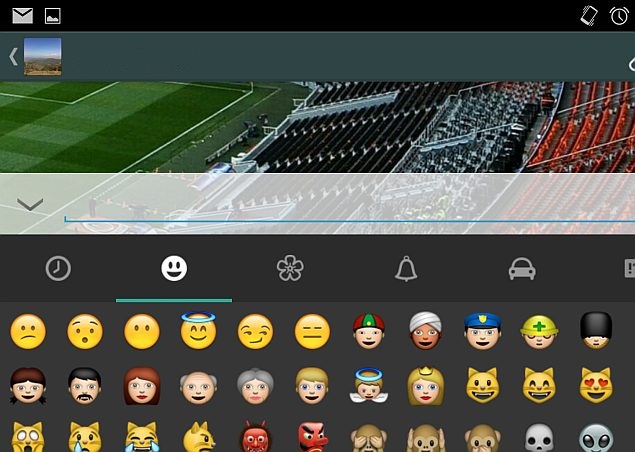- Home
- Internet
- Internet News
- Emojis to Tackle Racial Diversity With Skin Colour Options
Emojis to Tackle Racial Diversity With Skin Colour Options

New draft guidelines released Tuesday by the computing industry consortium Unicode offer a broader range of options for emojis, the ideograms used for various visual messages sent online.
"People all over the world want to have emoji that reflect more human diversity, especially for skin tone," said the latest draft released by Google's Mark Davis and Apple's Peter Edberg.
"The Unicode emoji characters for people and body parts are meant to be generic, yet following the precedents set by the original Japanese carrier images, they are often shown with a light skin tone instead of a more generic (inhuman) appearance, such as a yellow/orange colour or a silhouette."
The new guidelines offer characters "based on the six tones of the Fitzpatrick scale," a standard used in dermatology.
Emojis were initially developed in Japan but later adopted into global computing standards for use in electronic messages around the world.
The symbols may include anything from a yellow heart to a lollipop, but many are based on smiley faces.
The proposed changes still need approval from the Unicode consortium, but if adopted could take effect in mid-2105.
"Of course, there are many other types of diversity in human appearance besides different skin tones: Different hair styles and colour, use of eyeglasses, various kinds of facial hair, different body shapes, different headwear, and so on," the engineers wrote in the document.
"It is beyond the scope of Unicode to provide an encoding-based mechanism for representing every aspect of human appearance diversity that emoji users might want to indicate."
Catch the latest from the Consumer Electronics Show on Gadgets 360, at our CES 2026 hub.
Related Stories
- Samsung Galaxy Unpacked 2025
- ChatGPT
- Redmi Note 14 Pro+
- iPhone 16
- Apple Vision Pro
- Oneplus 12
- OnePlus Nord CE 3 Lite 5G
- iPhone 13
- Xiaomi 14 Pro
- Oppo Find N3
- Tecno Spark Go (2023)
- Realme V30
- Best Phones Under 25000
- Samsung Galaxy S24 Series
- Cryptocurrency
- iQoo 12
- Samsung Galaxy S24 Ultra
- Giottus
- Samsung Galaxy Z Flip 5
- Apple 'Scary Fast'
- Housefull 5
- GoPro Hero 12 Black Review
- Invincible Season 2
- JioGlass
- HD Ready TV
- Laptop Under 50000
- Smartwatch Under 10000
- Latest Mobile Phones
- Compare Phones
- OPPO Reno 15 Pro Max
- Honor Win RT
- Honor Win
- Xiaomi 17 Ultra Leica Edition
- Xiaomi 17 Ultra
- Huawei Nova 15
- Huawei Nova 15 Pro
- Huawei Nova 15 Ultra
- Asus ProArt P16
- MacBook Pro 14-inch (M5, 2025)
- OPPO Pad Air 5
- Huawei MatePad 11.5 (2026)
- Xiaomi Watch 5
- Huawei Watch 10th Anniversary Edition
- Acerpure Nitro Z Series 100-inch QLED TV
- Samsung 43 Inch LED Ultra HD (4K) Smart TV (UA43UE81AFULXL)
- Asus ROG Ally
- Nintendo Switch Lite
- Haier 1.6 Ton 5 Star Inverter Split AC (HSU19G-MZAID5BN-INV)
- Haier 1.6 Ton 5 Star Inverter Split AC (HSU19G-MZAIM5BN-INV)

















